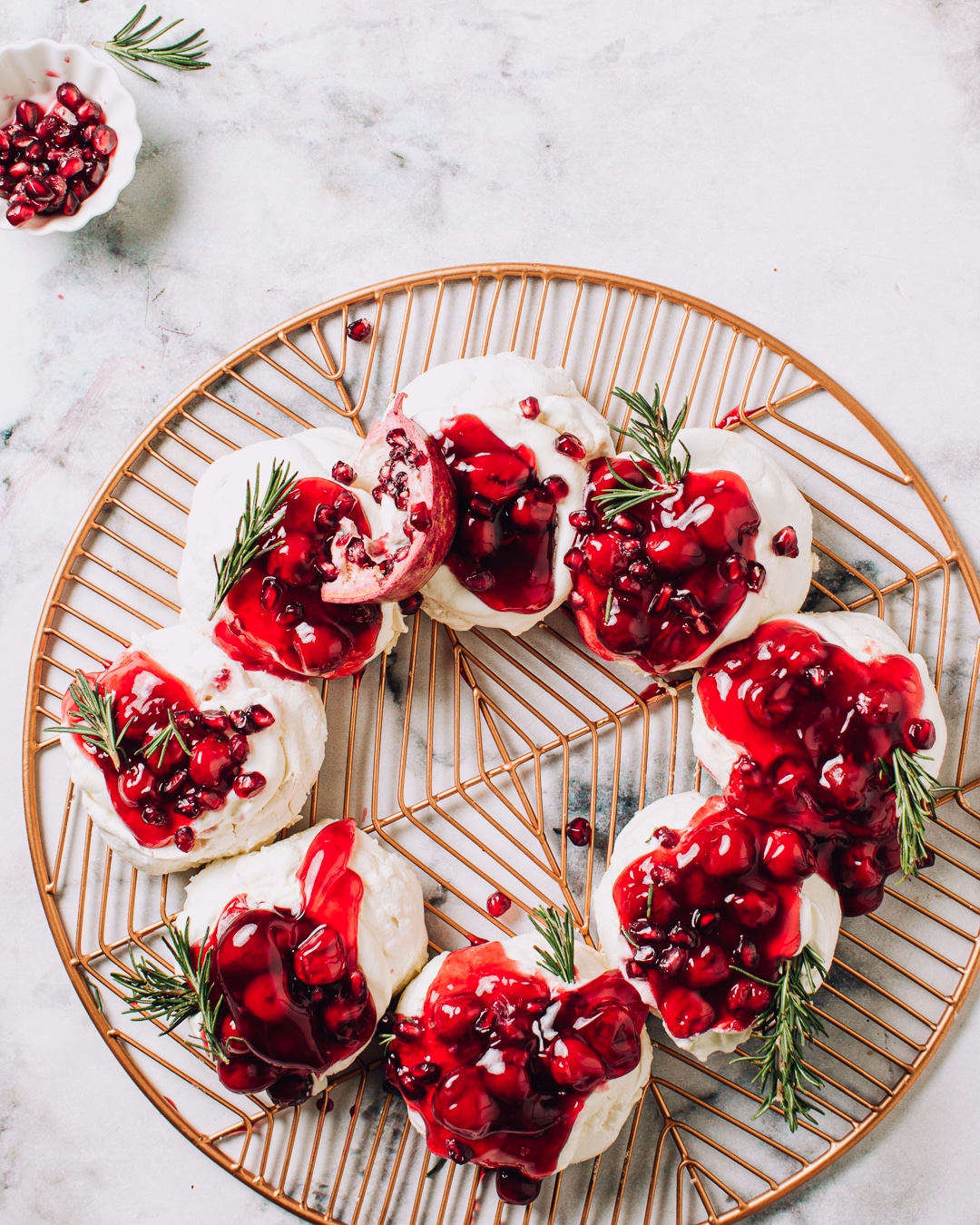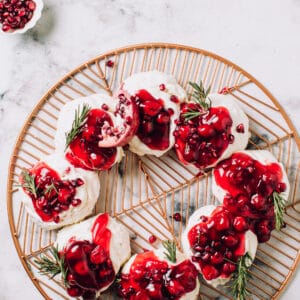Dec 09, 2019
How To Make Christmas Pavlova
Start with egg whites in a clean mixer bowl. Pasteurized egg whites don’t work as well, they’ll whip up but the meringue typically collapses in the oven. It’s better to crack fresh ones. Add an acid, cream of tarter here, or swap in lemon juice. The acid stabilizes the meringue. Beat on medium-low speed until the whites are foamy before starting to slowly add the sugar, a bit at a time, while increasing mixer speed. You don’t want to add air or sugar too quickly, which can compromise the strength of the foam. Once all the sugar is incorporated and dissolved (feel the mixture with your fingers, it shouldn’t be grainy), add the salt, cornstarch and vanilla extract. Trace an overturned bowl onto a large sheet of parchment paper to make about a 9″ circle. Flip the paper over and place it on a baking sheet. You’ll be able to see the pencil marks to use as your guide. This Christmas pavlova is shaped like a wreath. Pipe or spoon the meringue in eight mounds around the circle you’ve drawn, use the backside of a spoon to make dips in each mound (for putting the toppings later) and bake.
What temperature should you cook pavlova?
Pavlova should be cooked at a low temperature for a longer time, and 250ºF is usually perfect. The goal is to produce a crisp exterior that is not browned, and a soft, marshmallowy interior. A higher cooking temperature encourages browning of the outside before the pavlova is set.
How to tell if pavlova is cooked
Pavlova is cooked when the exterior is crisp but not browned and the inside is soft and marshmallowy. Tap the outside and it will sound hard and hollow. If you poke a toothpick in the centre it will come out sticky. To nix any doubt on doneness, let the pavlova cool inside the oven with the oven turned off. This also prevents the pavlova from cracking with an abrupt temperature change.
How early can you put cream on pavlova?
Wait to put the cream on top of the pavlova until just before serving or the meringue will lose its crispness. And of course, hold off until the pavlova is completely cool to put cream on top or your whipped cream will turn to a puddle.
How to store pavlova
Store a plain pavlova base (no cream or fruit) in an airtight container at room temperature for one or two days. Once toppings are added, refrigerate it covered (but for best texture and appearance, add toppings as close to serving as possible.
How far in advance can you make Christmas pavlova?
You can make a pavlova meringue base a day or two in advance and store it at room temperature in an airtight container. You can add cream and fruit up to four hours in advance, but note that the whipped cream will start to loosen and the fruit toppings may start to slide off.
Can pavlova be frozen?
You cannot freeze a pavlova once it has been topped. Freezing the meringue base is possible, but not ideal. Once thawed, it will weep moisture and will lack its crisp exterior. Not to mention it is super fragile will likely emerge broken or with shards cracked off.

